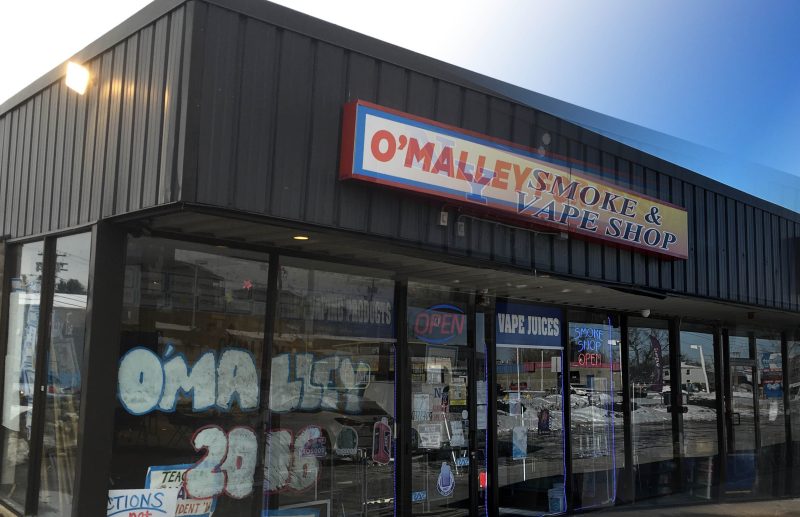Presidential campaigns are, in essence, businesses with a limited shelf life. The candidate is the product. The campaign tries to sell the product with ads and outreach and by getting media attention. Donors are investors; power is the return. And at the scale of a major-party presidential nominee, the business is national, with thousands of employees and an enormous budget spanning an extended period of time.
At the level of state primary, though, it’s different. The duration is shorter and the scale more modest. Particularly in places such as Iowa or New Hampshire, where nearly every campaign settles down at least for a while, it’s a part of the local economy, hiring people and buying ad time and — to the point of this article — renting space where the often-dull work of campaigning can take place.
The result is that presidential campaigns often get short-term leases on properties in places such as Des Moines or Manchester, N.H., spaces that are used for a bit and then rented out again to someone else.
When I was in Manchester last weekend, a though occurred to me: What are the spaces I saw in 2016 and 2020 being used for now? So I went around and took photos of the past headquarters used by candidates vying for the primary in those years. It offers an interesting lens into both the process of campaigning — and the local and national economy.
This wasn’t quite as easy as it might seem. Many of the spaces rented by campaigns are just offices within office buildings (albeit often large ones). That was the case with former New Jersey governor Chris Christie’s 2016 office in New Hampshire, which occupied the second floor of a building in a medical center.
The outside of the building hasn’t changed and, at a glance, it would be hard to tell what replaced Christie (in the building, not on the ballot). The answer: a medical billing office.
Sometimes, though, it’s very easy to tell. That’s the case with former Maryland governor Martin O’Malley whose (mostly empty) 2016 headquarters, located in a storefront at a strip mall, is now a vape shop.
It declined to retain the graffitilike effect on the window.
The office from which the campaign of Sen. Bernie Sanders (I-Vt.) dispatched volunteers in 2016 went more the route of Christie’s headquarters, being replaced by a property tax management company.
His campaign had another office, too — located with some irony on the second floor of an office building affiliated with Citizens Bank.
Over the intervening eight years, the “Bernie” sign has come down.
Former Ohio governor John Kasich’s 2016 campaign was based in a weirdly situated Colonial-style house, next to a gas station and a major highway. It is now a landscape supply company, with the remnants of a pile of mulch sitting outside.
Just north of Kasich’s headquarters that year was that of Sen. Ted Cruz (R-Tex.). Like Christie’s, the headquarters featured a large room over another building but, unlike Christie’s, the entrance was up a wooden staircase in the back.
Eight years later, the staircase is noticeably more worn and the space is empty.
That means that the sign out front, which in 2016 promoted Cruz to my amusement, also has an empty spot that Cruz once occupied.
One of the most remarkable transformations since 2016 involves the headquarters of former Florida governor Jeb Bush. In 2016, he occupied a run-down space along Elm Street just south of downtown Manchester. The awning was collapsing and the graveyard just behind the building offered a too-easy metaphor.
When I went back in 2020, I noticed that the awning had been fixed up, but I didn’t take a picture. No matter; bigger changes were looming.
The Bush headquarters was torn down and a mixed-use building was constructed in its place. There’s probably a metaphor in this, too, but I’ll leave that to others.
You can see the pattern here, though. Shifts from campaigns to real estate, medical care, vaping — a decent encapsulation of changes to the national economy since 2016. And, of course, that some of the spaces are still empty.
That’s true, too, even over the past four years. Sanders’s 2020 space — across the parking lot from the Citizens Bank and next to a grocery store — is currently available for rent.
The campaign headquarters of Sen. Michael Bennet (D-Colo.) was located upstairs in a downtown Manchester office building. Since then, not much has changed.
In fact, this same building also housed Hillary Clinton’s 2016 headquarters (though I didn’t take an outside photo at the time). According to the window signage, her suite (300) was unoccupied in 2020 and is unoccupied now.
The 2020 campaign of Sen. Elizabeth Warren (D-Mass.) was located in the lower level of an apartment building near downtown. The building is still an apartment building; it wasn’t clear when I was there Sunday what might be in her campaign’s old space.
Pete Buttigieg, now the transportation secretary, ran his 2020 presidential campaign out of an art space across the street from the arena in downtown Manchester. It’s still there.
His 2020 rival, Sen. Amy Klobuchar (D-Minn.), had a storefront a bit farther from downtown, plastered with campaign signs. Now, it’s a tax preparation center.
(It is also just behind Donald Trump’s 2024 headquarters and across the street from Democrat Marianne Williamson’s.)
In 2020, Andrew Yang had one of the most interesting headquarters, located across the Merrimack River from downtown in a tiny building in a residential neighborhood.
It has since been converted into a coffee shop.
Joe Biden’s efforts in New Hampshire four years ago were not terribly impressive, given that he finished fifth.
His primary headquarters then was in a meeting hall for the firefighters union; that’s what it still is today.
He had a secondary office in downtown Manchester (around the corner from the Bennet-Clinton building). It, too, is the same art gallery it was then.
Now we reach the kicker to this story.
In 2016, Donald Trump came into New Hampshire having just narrowly lost Iowa. His campaign was run out of another office building in Manchester — a building that also housed the offices of Americans for Prosperity, for which his campaign manager Corey Corey Lewandowski had once worked.
A sort of overhang out front of the building bore a Trump sign.
That sign is no longer there. Instead, it has been replaced by a sign promoting Real Options, a women’s health clinic that offers counseling and advice to women seeking abortions — albeit, according to one abortion-access organization, to dissuade women from seeking abortions.
About as concise a distillation of politics since 2016 as you could find.





























